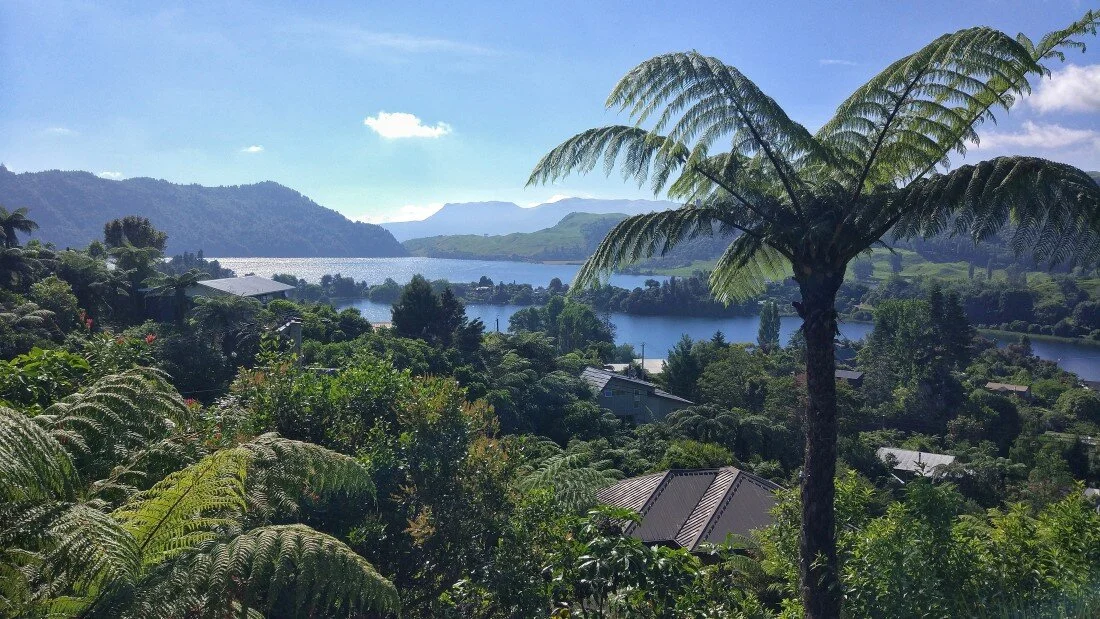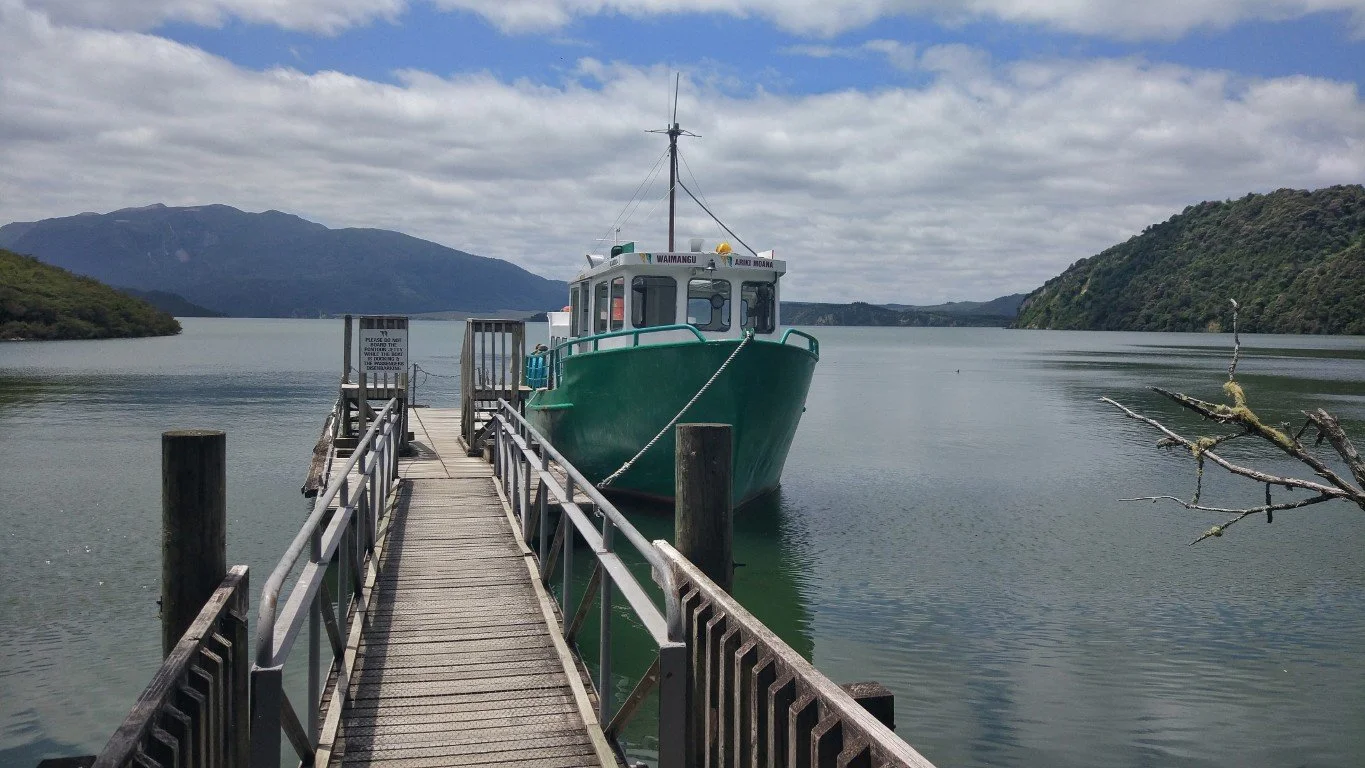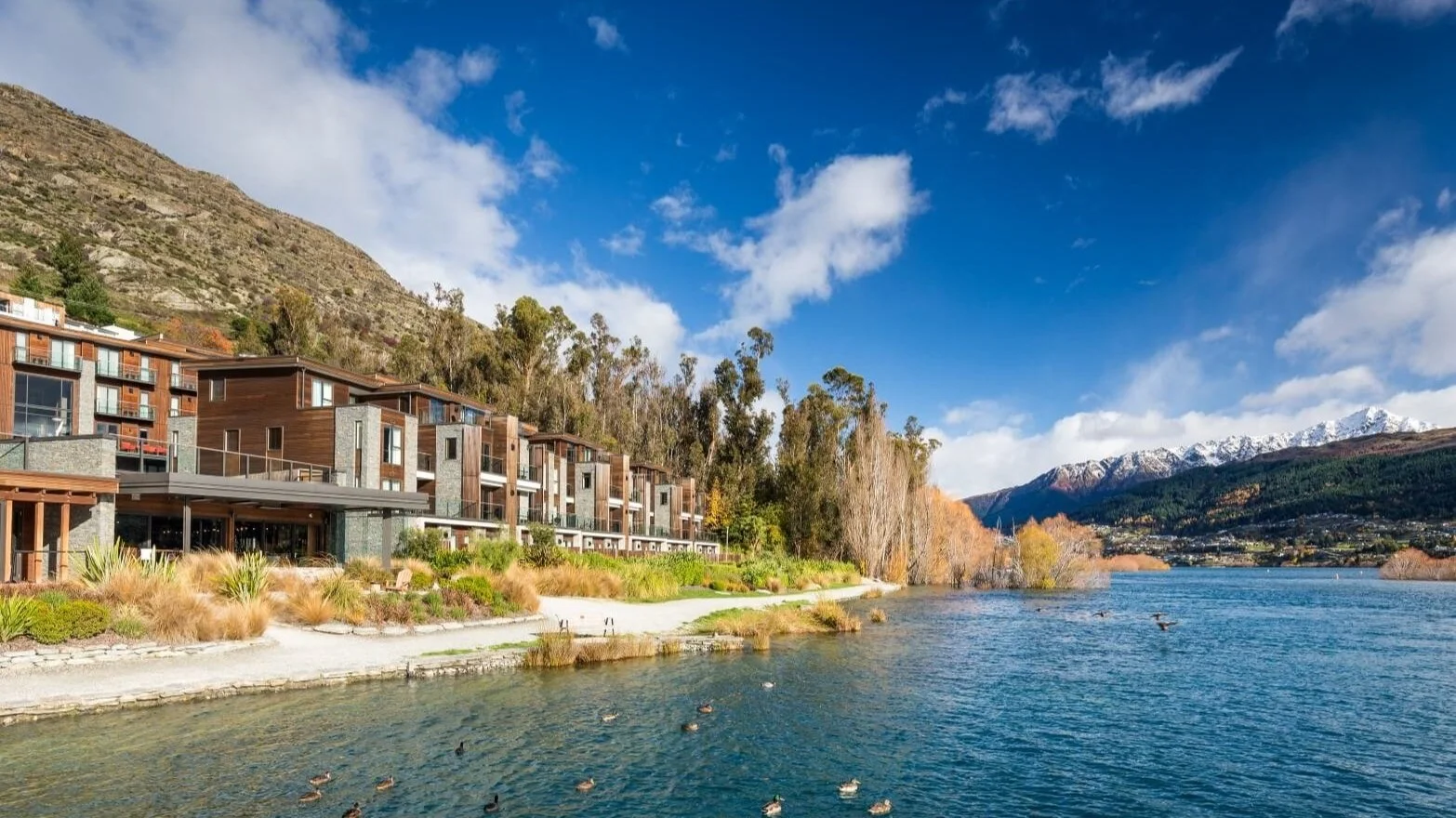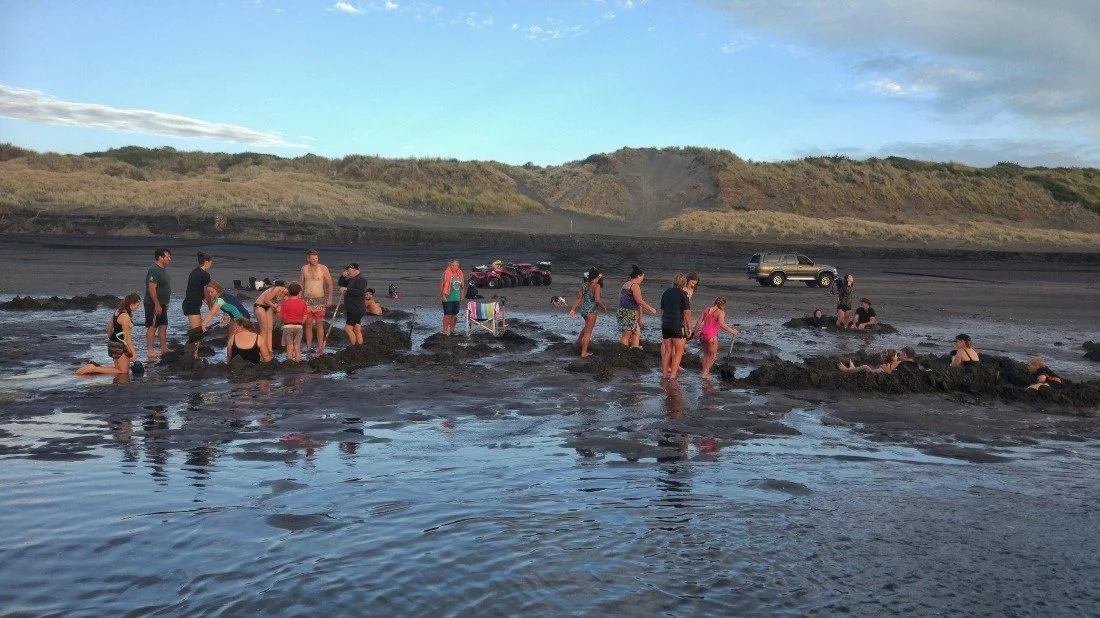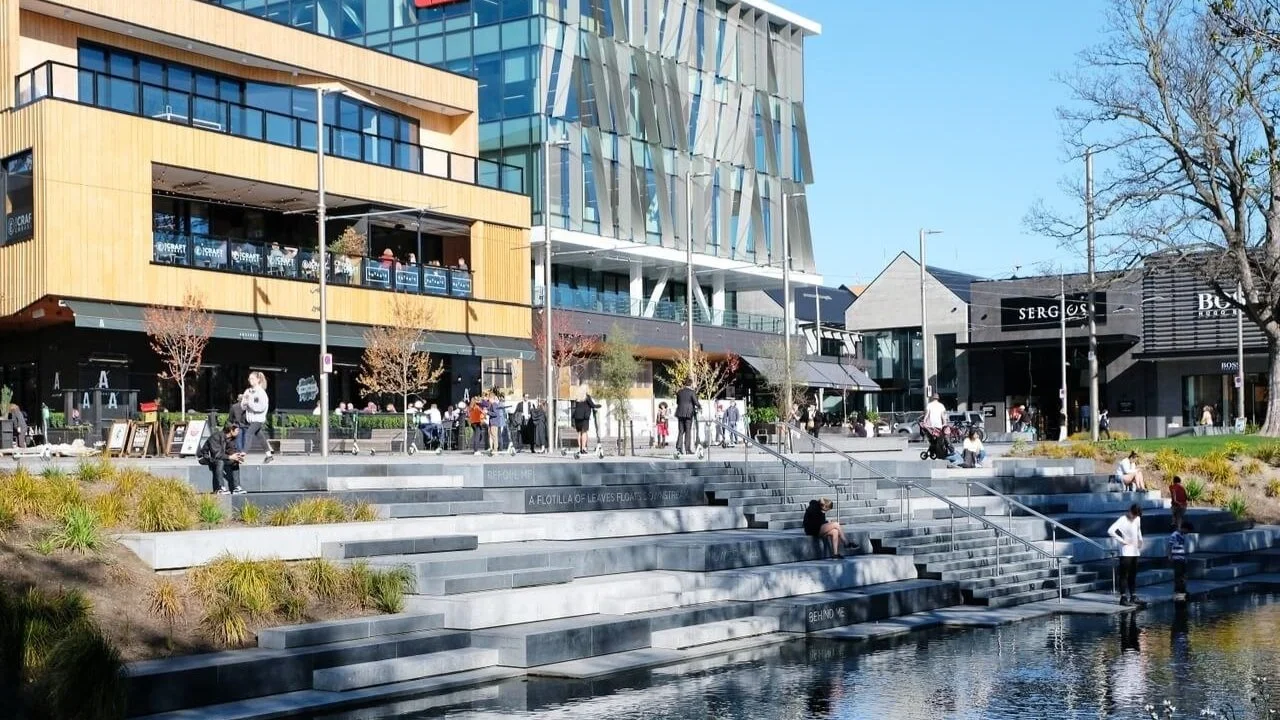How To Find The Best Geothermal Park In Rotorua
/Rotorua New Zealand is the best place in New Zealand to see geothermal activity live in action. The whole city steams, bubbles and the smell of sulphur is omi-present, sometimes even a bit overpowering.
All over Rotorua, geothermal parks can be visited. Some cost an entry fee, some are free. But which is the best geothermal park in Rotorua for you?
While we won’t be able to make the decision for you, we listed all the thermal parks in Rotorua, the highlight and the cons to each park to make it a little less overwhelming for you to choose.
Geothermal Rotorua FAQ
So, why does Rotorua have geothermal activity in the first place?
As you might know, New Zealand sits on the Pacific Ring of Fire, a ring of volcanos that spans all around the Pacific Ocean.
The earth crust in Rotorua is particularly thin which causes the hot water and sulphur to rise to the surface and bubble up in spectacular colours.
On top of this, New Zealand is divided by the Pacific and Australian tectonic plates, which causes many smaller and occasionally larger earthquakes (you probably remember the devastating earthquakes in the Christchurch area).
The geothermal activity in Rotorua keeps moving around underground, continuously changing the landscape and popping up in new places (recently a new mud geyser erupted in someone’s garden overnight).
Geothermal spots can be found all over rotorua. like here in whakarewarewa (redwood) forest
You might wonder now, how on earth would anyone want to visit (or even live) in such a hostile place? Because for visitors and volcano-freaks like me, it’s extremely fascinating to watch! And for many people living in Rotorua, geothermal activity is a great source of energy to heat the houses and to cook. This was especially useful to the Maori tribes before electricity was introduced.
Alright, enough volcano-nerd talk now.
Are the Rotorua geothermal areas dangerous?
Not if you stay on the marked pathways. While it can be very tempting to put your hand into the water to see how warm it is (and believe me, I’d love to do this!), some of the streams are extremely hot and can give you nasty burns. Some of the pools are also acidic, so please do stay away.
Some other fields look like they’re made of solid rock and make you believe you can walk on them. In reality, a lot of these structures are very thin and hot water runs underneath it, you don’t want your foot stuck in there.
So, please, stay on the marked tracks at all time, and you’ll be fine.
stay on the marked path
How to get to the geothermal parks
Apart from Te Puia and some of the free geothermal parks, all of Rotorua’s geothermal attractions are outside of the town centre.
The easiest way to reach them is by car. All of the parks have plenty of parking, but they can get full during the busy season in Summer.
There are tours that visit one or several parks as a day trip from Rotorua. They are a great option if you’re not mobile or don’t have much time but have a restricted time in the parks.
love what you read? pin it to pinterest!
Good to know when visiting in Summer
If you visit the Rotorua thermal attractions during Summer, it’s extra important that you bring plenty of water while in the parks, more than you usually would.
Imagine it being a lovely New Zealand Summer’s day. The sun burns form above. This in itself can be sweaty enough. But now imagine the geothermal heat burning up from underneath your feet. I’ve visited three geothermal parks in Summer and the others outside the main season. Believe me, it’s bloody HOT being sandwiched between two heat sources!
it can get very toasty in summer
Here’s an idea: Combine visiting geothermal parks with some time at one of the many Rotorua Hot Pools!
How To Find Your Best Geothermal Park In Rotorua
Geothermal Rotorua spans from the town itself along the many lakes and almost all the way down to Taupo. Here’s a Rotorua thermal attractions map to find all geothermal parks in the area.
Wai-O-Tapu Geothermal Wonderland
(Update: Wai-o-Tapu will re-open 22 October 2022)
Wai o tapu means ‘sacred water’ in the Maori language. It’s by far the most famous and most popular geothermal attraction in Rotorua. Chances are that if you’ve seen pictures of geothermal Rotorua, it was of the Champagne Pools in Waiotapu.
the famous champagne pool
Every day at 10.15 am, Lady Knox Geyser erupts. Listen to the story of how the geyser was discovered - not a very pleasant encounter for the ones who found it. Lady Knox erupts with the help of (biodegradable) soap, which is also part of the story.
Waiotapu is on a huge area, over 18 square km. The park is divided into three walks. If you’re short on time and only after the highlights, walk 1 would be enough. But I highly recommend you do all three walks all the way down to the lake, as you can see the landscape change dramatically.
Is Waiotapu the best geothermal park in Rotorua? It’s definitely in my personal Top 3 and one of the top things to do in Rotorua. If you don’t mind the crowd, you definitely can’t go wrong with this park.
Pros
The colours are amazing! No wonder they called one of their pools ‘Artist’s Palette’, it looks exactly what it sounds like! Also Devil’s Bath and the Champagne Pools are a pure feast for the eyes!
Some of the walkways in Wai-o-Tapu lead right over the hot pools and bubbling mud. You can’t get any closer to the thermal activities than here.
it’s very obvious why this area’s called artist’s palette
Cons
Personally, I was disappointed to learn that Lady Knox Geyser needs soap to trigger it every morning. She would also erupt without help, but not on a daily basis (and definitely not on schedule). It’s still impressive to watch but takes away a bit of the mystery.
Since it is the most famous geothermal park in Rotorua, it can get extremely busy.
How much time should you spend in Waiotapu?
You’ll need at least 3 hours
Waiotapu is great for…
… first-time visitors to Rotorua who are after seeing the most colourful landscape of all the parks.
Important to know
Wai-o-Tapu is completely cash-free. However, they do accept all major credit cards and EFTPOS.
Lady knox geyser at wai-o-tapu thermal wonderland
Waimangu Volcanic Valley
This is the world’s youngest geothermal system. It was created in the fateful night of June 10 1886 when the volcano Mount Tarawera erupted. The devastating eruption killed about 200 people, sunk the then-famous Pink and White Terraces and created a completely different landscape. Lake Rotomahana grew to the size it is now and the Waimangu geothermal system we can now see emerged.
look, steam!
Waimangu Volcanic Valley geothermal park is divided into two parts. Part one is the walk through the geothermal area down to Lake Rotomahana and part two a boat cruise on Lake Rotomahana. Both parts can be bought individually if you’re short on time, but I highly recommend you do both to really get the feel of the place.
The walking part is a 4 km nature walk through native bush, past the magically blue Inferno Crater, hot streams and colourful sinter terraces. Once you reached the lake and didn’t book the cruise, just hop on the shuttle bus that brings you back to the entrance.
The boat has you cruising over Lake Rotomahana, past the locations where the Pink and White Terraces used to be and past geothermal activity along the shores of the lake, complete with its own little geyser. The skipper will explain how the Mt Tarawera eruption changed the landscape and the people who witnessed it.
Pros
It’s a lot less busy than Wai-o-Taup. We visited between Christmas and New Years, which a very busy season for Rotorua but it was still very quaint.
Ready for the cruise on lake rotomahana
Waimangu has an awesome free guiding app! The GPS knows where in the park you are and you’ll get additional information to what’s already written on the signs. It even works with Augmented Reality so you can point your camera at the direction they tell you and for example see the now extinct giant geyser erupt on your screen! (The AR unfortunately didn’t work on my phone, which was a pity but even without it I loved the app).
We loved the combination of the nature walk with the lake cruise.
Cons
There was nothing we disliked, everything was great!
How much time do you need for Waimangu Volcanic Valley?
For the walk only it will take you at least 1.5 hours.
Just the cruise, allow 1.5 hours as well (the cruise takes 45 minutes but you’ll need the shuttle to bring you there and back)
For the nature walk and cruise, allow about 4 hours (we stayed almost the full day, though)
Waimangu Volcanic Valley is great for...
… people who like to walk through an ever-evolving geothermal valley and/or enjoy a very special lake cruise.
… people who prefer a quieter (and possibly more authentic) geothermal park
on the lake rotomahana cruise
Hells Gate
Hells Gate is where the best mud pools in Rotorua can be found. There’s a walk that leads through Hells Gate geothermal park. Along the way, you’ll get to see a lot of bubbling mud and steaming water. One of the coolest things to see in the park is the biggest mud volcano in any New Zealand geothermal reserve. It’s about 3 meters high and erupts like a normal volcano, just that it spits mud instead of lava.
The mud volcano at hells gate
But probably the main reason why you’d want to visit is the Hells Gate Spa. Sitting in the rejuvenating mud baths, you can almost feel getting younger, healthier and more beautiful by the minute (as I said...almost).
There are several experiences to choose from, from walk-only or mud bath-only. But the best value for money is definitely the Full Experience, where you combine the walk with the spa bath.
Click to read how we enjoyed Hell’s Gate Rotorua
Pros
No other geothermal park in Rotorua offers a spa treatment, this is very unique to New Zealand.
Hells Gate Rotorua offers a complimentary shuttle bus from Rotorua to their park and back.
Cons
Hells Gate was the first Rotorua geothermal park in New Zealand that I visited. To be honest, back then I was a little disappointed by the lack of colours as it’s mostly grey mud.
But now that we’ve visited Hell’s Gate again, joined the complimentary tour and then bathed in the mud pools, I can say the combination of park and pool is an absolute highlight!
hang on, you got some mud there…Hells Gate spa Rotorua
Get 10% discount on any of the Hell’s Gate experiences! Just go to their website to book your tickets and enter the promo code WGNZ
How much time to spend at Hells Gate
The walk around Hells Gate Rotorua takes about 1 - 1.5 hours, the spa another 90 minutes. Take at least 3 hours for the full experience but more is better.
Hells Gate is ideal for...
… those who are looking for a combination of a geothermal park and mud bath spa.
Te Puia
Te Puia is a one-stop-shop for everything that Rotorua (and New Zealand) is famous for. It combines the geothermal parks, Maori cultural experiences and even a kiwi conservatory in one place!
Most visitors will want to visit Te Puia to see the famous Pohutu Geyser. It erupts up to 30 meters high, usually about once or twice per hour. The exact time cannot be foretold, but the little geyser Te Tohu right next Pohutu helps. Its nickname is ‘indicator’ as it usually erupts about 10 minutes before Pohutu takes off.
Pohutu geyser eruption
There are several options to explore Te Puia. The base entrance fee comes with a 60-90 minutes guided tour of the geyser, a walk through the kiwi nocturnal house and their carving and weaving school. From there, you can add-on a 30 minutes Maori cultural show as well as a packed hangi lunch (that’s been cooked in the earth oven with geothermal heat).
In the new evening option, you do a similar guided 90minutes walk along the beautifully lit up path.
Apart from the geyser, the guided tour, the maori culture and the kiwi house, there’s also a walking path that leads through the rest of the park, which is a lot less busy. If you have the time, it’s a nice park to walk through.
Pohutu geyser at te puia erupts every 10 minutes or so
Pros
I really liked the guided tour with a Maori guide. We not only got to learn about general Maori life, our guide also told us about her own whanau (family), which made the tour a very personal experience.
I did like the fact that the geyser erupts on its own, no help of soap needed like elsewhere. And the height of the eruption is quite impressive, especially knowing it does this about twice per hour!
Cons
If you are looking for a pure geothermal experience, Te Puia probably isn’t right for you. Apart from the impressive Pohutu Geyser and the blue lake next to it, there’s not crazy much thermal activity to see.
How much time to spend at Te Puia
At least 90 minutes for the guided tour and to make sure you see Pohutu erupt.
Te Puia is ideal for...
… those who want to see Pohutu Geyser erupt
… people who are short on time and/or like to visit a geothermal park, learn about Maori culture and see a kiwi bird, all at the same time
steamy pohutu geyser and blue pool
Looking for more things to do in Rotorua? How about a Maori cultural experience? Or check out our Rotorua page for even more ideas!
Orakei Korako
Also known as the Hidden Valley, Orakei Korako is the geothermal park that’s furthest from Rotorua and closer to Taupo. While it’s a 45 minutes’ drive from Rotorua, it’s only 25 minutes from Taupo.
It’s a smaller geothermal field but in no means less attractive than the rest.
The geothermal area at Orakei Korako is only accessible by ferry. There’s no timetable, they give you a ride whenever you like.
The loop track first leads you over the incredible silica terraces, believed to be the largest of their kind since the destruction of the Pink and White Terraces. Later, the scenery changes from a steaming field to a bush walk with bubbling mud and water next to the walking track.
ferry to orakei korako
A lovely addition to the park is the cafe on the parking side of Orakei Korako. The location is just amazing! There’s a deck over the water, sun umbrellas are up and there’s nothing better than sitting there with a coffee or glass of wine, overlooking the water and the geothermal field on the other side. And the kids will love feeding the local eels.
Pros
Orakei Korako is a lot more personal than the other geothermal attractions in Rotorua as the owners live right on-site, next to the cafe. They’re around if you have any burning questions or issues and happy to help.
This is the best geothermal park in Rotorua for dog owners! Nowhere else can you bring your best friend along while exploring geothermal activities! Just make sure you keep them on a leash, keep them safe and clean after them.
Cons
It’s a somewhat small park compared to the other ones you can find around Rotorua. But if you stay in Taupo and have some time on your hands, you should still check it out.
You can spice up the experience by booking a jet boat ride from Taupo or Rotorua and racing to Orakei Korako geothermal park on the mighty Waikato River. This might just be the most thrilling transfer service you ever had!
silica terrace at orakei korako
It’s a pity the cafe is only a cafe and not open for dinner. I would LOVE to come here in summer and eat dinner over the water and with views over the steaming field on the other side of the lake.
How much time to spend at Orakei Korako
Roundabout 1 - 1.5 hours to explore the geothermal park and then maybe add some time to spend at the cafe.
Orakei Korako is ideal for...
… a relaxed Sunday afternoon where you want to go for a walk and drink a coffee afterwards.
… people with friendly canines
Free Geothermal Attractions Rotorua
If you’re on a budget or just don’t feel like spending money to see a geothermal park, fear not. There are plenty of parks in geothermal Rotorua you can visit completely for free! (and if you’re curious what else you can do for free in Rotorua, click here!)
Kuirau Park
Ever since my first visit to Rotorua in 2009, Kuirau Park has been one of my favourite places and I try to go for a stroll through the park whenever I visit Rotorua. To me, Kuirau is the best free geothermal park Rotorua. I love to see how the geothermal activity keeps changing, how mud pools pop up where there weren’t any last time I visited and how the colour of the water changed with years and seasonality.
chris enjoying a free foot bath at kuirau park
One area of the park is calmer, with a green lake and a lovely bridge leading over it. The small lake is flanked by bathhouses where you get to dip your feet in warm geothermal water.
Further down the walk, past mud holes and picnic tables, you get to a more active lake. The water is very hot and especially on a cold winter’s day you can hardly see anything thanks to all the steam coming from the lake. A walkway leads around and over the lake to give you the best possible vistas.
And this is really just your ‘regular’ public park and free for everyone to visit! How amazing is this, please?!
isn’t this amazing? quite impressive for a free park! at kuirau park
Ohinemutu
Extend your walk from Kuirau Park to Ohinemutu village right on the shores of Lake Rotorua. This is a great combination of free Maori village and geothermal park.
Back when Rotorua was new, Ohinemutu was the first settlement on the lake. It’s still inhabited by the local iwi (tribe) Ngati Whakaue. When you walk through the village, it will leave you wonder how it’s even possible to live here. The houses are placed right within a geothermal field, complete with bubbling hot streams right in and around the people’s backyards!
The best things to see in the village is the Ohinemutu Marae and the church. Both are still very much in use and the marae (meeting house) can only be viewed from outside. It is Maori tradition that visitors can only go into a marae by invitation of the local iwi.
Ohinemutu church, however, can be visited. While the outside is built in the typical Tudor style, you’ll find a strong Maori influence inside, with carvings and woven panels.
ohinemute marae
Sulphur Point
This lovely walk starts at Rotorua Lakefront. A walkway leads you along the shore through bush, towards the peninsula. The geothermal part of the walk starts here and you can see how the water changes from blue into a muddy (or rather sulphur-ey) beige. Following the path down along the golf course and towards sulphur bay, you can witness how the geothermal activity increases.
The walk ends at Government Gardens, near Polynesian Spa. The English style garden is a lovely place to explore.
sulphur point
Geothermal Walking Track
On the other side of Polynesian Spa, the walkway continues through Sulphur Bay, with even more geothermal activity and bubbling mud. The bay is also a bird sanctuary. Surprisingly, they don’t seem to care much about the acidic water that surrounds them.
Wai-o-Tapu Mud Pool
The Waiotapu Mud Pool can be found on the loop road that leads to the geothermal park. It’s not part of the paid park though, and worth a quick stop on the way to the park or on the way from or to Taupo.
The mud pool is massive and it’s really mesmerizing watching the mud plop up. In the right season with the right amount of water, you can see the mud patterns that can be found on the postcards. It does need a bit of luck, though.
What do you think? Which is the best geothermal park in Rotorua for you? Let me know in the comments below!

